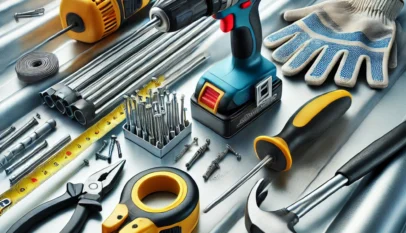
Metal roofing cutters are essential tools for anyone working with metal roofing materials. These cutters provide precise cuts that ensure a professional finish while saving time and reducing material waste. Whether for a DIY project or professional installation, understanding how to choose and use these tools can significantly impact the quality of the work.
In the world of construction and home improvement, the right tools can make a considerable difference. Metal roofing requires specific cutting techniques due to its durability and thickness. Using a metal roofing cutter efficiently allows for clean and accurate cuts, making the installation process smoother and more effective.
As interest in metal roofing continues to grow, so does the need for reliable cutting tools. From hand-held options to more advanced machinery, the variety available provides choices that suit different project needs. Familiarity with these tools can empower individuals and professionals alike to achieve successful roofing outcomes.
Understanding Metal Roofing Cutters
Metal roofing cutters are essential tools for efficiently cutting metal roofing materials. They come in various types, each designed for specific tasks, with key features that enhance performance and user experience.
Types of Metal Roofing Cutters
Metal roofing cutters can be categorized into several types. The most common include:
- Snips: Hand-operated tools ideal for making intricate cuts. They are lightweight and portable, suitable for both straight and curved cuts.
- Power Shears: Electric or battery-powered, these tools offer speed and efficiency for larger projects. They can cut through thick sheets without much effort.
- Nibblers: These tools remove small bits of metal, allowing for precise cuts. They are often used for complex shapes and are suitable for various metal types.
- Circular Saws with Metal Cutting Blades: These provide versatile cutting options, making them a favorite among contractors. Custom blades enhance their ability to handle different metal gauges.
Selecting the right type depends on the specific needs of a project.
Key Features of Effective Cutters
Effective metal roofing cutters possess several key features that enhance usability.
- Cutting Capacity: This refers to the maximum thickness of metal the cutter can handle. Higher capacity tools are preferred for thicker materials.
- Blade Quality: High-quality blades ensure clean cuts and reduce the need for reworking. They should be durable and resistant to wear.
- Ergonomic Design: Comfortable grips and lightweight structures help reduce fatigue during prolonged use.
- Safety Features: Tools should include features like blade guards and safety switches to protect users from accidents.
Investing in cutters with these features can lead to better efficiency and safety on the job.
Best Practices in Using Metal Roofing Cutters
When using metal roofing cutters, adhering to best practices is essential for achieving clean cuts and ensuring safety. This section outlines important safety measures, maintenance tips, and effective cutting techniques.
Safety Measures
Safety is paramount when working with metal roofing cutters. Operators should always wear protective gear, including safety goggles, gloves, and hearing protection. Long sleeves are recommended to protect against sharp edges.
Before starting, it’s crucial to inspect the cutter for any damage. Ensure the blade is sharp and free of debris.
Work in a clean, well-lit area to prevent accidents. Keep hands and loose clothing away from moving parts. Using clamps can secure materials, reducing the risk of slippage during cutting.
Lastly, familiarize yourself with the equipment’s operation manual to understand specific safety instructions.
Maintenance Tips
Regular maintenance prolongs the life of metal roofing cutters. It’s important to keep blades sharp, as dull blades can compromise cutting quality and increase the risk of accidents.
After each use, clean the cutter to remove metal shavings and debris. Use a soft cloth and appropriate cleaning solution.
Periodically inspect the power cord and other components for wear. Lubricate moving parts according to the manufacturer’s guidelines to ensure smooth operation.
Store the cutter in a dry place, and cover it to prevent dust accumulation. Routine checks and cleaning can prevent serious issues and costly repairs down the line.
Cutting Techniques
Employing the right cutting techniques is vital for efficiency and accuracy. Start by marking the cutting line clearly on the metal with a pencil or marker. This ensures a precise cut.
When cutting, maintain a steady, even pressure on the cutter. It’s advisable to cut in straight lines whenever possible to avoid jagged edges.
For intricate shapes, utilize specialized cutters or jigs to assist in maintaining a smooth line.
Always cut away from the body and other workers to minimize the risk of injury.
Taking time to perfect these techniques can lead to better results and safer operations.
Zudio Franchise: Unlocking Success in the Retail Market
Zudio franchises represent a unique opportunity for entrepreneurs looking to enter the fas…




